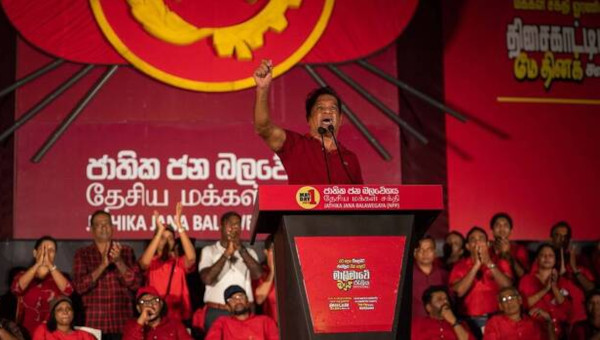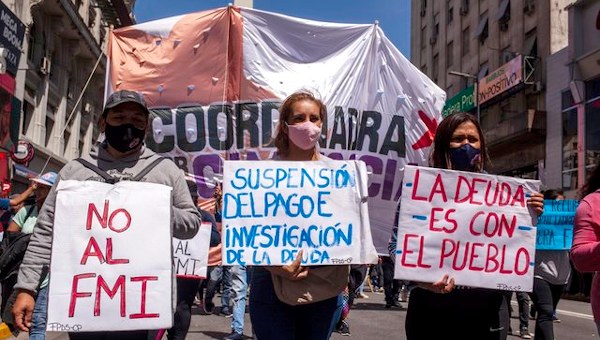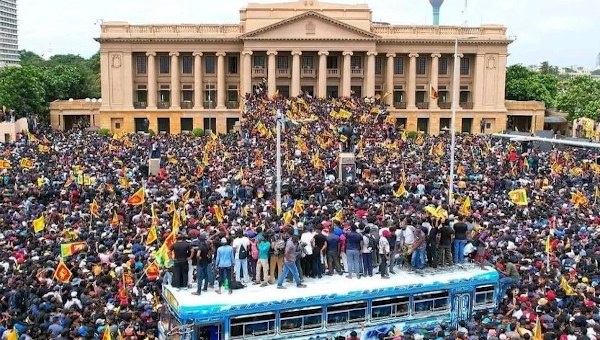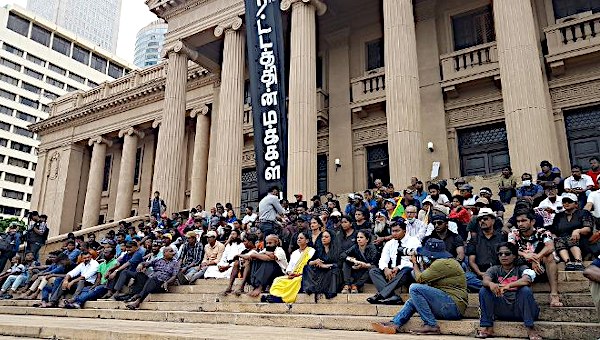The War in Sri Lanka and the Left
Since the initial drafting of this piece, Liberation Tigers of Tamil Eelam (LTTE) leader Velupillai Prabhakaran allegedly has been killed by the Sri Lankan forces and the Tigers have surrendered. According to Sri Lankan President Mahinda Rajapaksa this victory in his military campaign against the LTTE has ushered in an era of peace on the island. Thus, the demands we made below for a ceasefire may now appear moot. However, because of the Sri Lankan government’s continued refusal to address the structural problems that led to Tamil discontent in the first place and its refusal to acknowledge the horrific manner by which it killed thousands of Tamil civilians in the Vanni in just this latest round of war, there is enough reason to believe that violence will flare up again in the country, perhaps sooner rather than later. Any peace that does not recognise its own limitations will be shortlived. For this reason, despite the ending of Eelam War IV, it is still necessary that we work toward more humane alternatives, involving strategies to push the Sri Lankan state into a political resettlement.
The recent burst of mass mobilizations by sections of the Tamil-Canadian community in Toronto (and to varying degrees across Canada and North America) has brought to the fore several contradictions concerning the conflict in Sri Lanka and its presence in and connection to Canada. Mainstream media’s responses to the protests have been overwhelmingly racialist, exposing many of the limits of Canadian multiculturalism. In order for Canadian multiculturalism to accept any given group of people as a cultural community, it must define that group by differentiating it from a supposedly mainstream Canadian identity. This focalising Canadian identity – in effect a non-identity – is white and middle-class. Thus, when the Toronto Star publishes an editorial entitled “Protesters vs. the public” it effectively notes that the protesters are not part of the public by pitting (Tamil) protesters against the (Canadian) public. Rather than focusing on the war, media outlets have focused on the inconvenience posed to commuters, thereby shifting attention away from deaths in Sri Lanka to traffic regulations in Canada. Consequently, responses to the protests have largely demonstrated pernicious xenophobia. For instance, in the Toronto Sun, Peter Worthington argues that not using excessive force (e.g., water cannons) against Tamil protesters who block streets is tantamount to “reverse racism” against white Canadians.
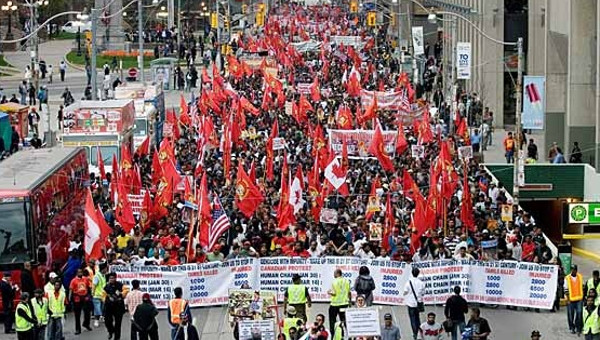 But if the coverage of the protests has made certain contradictions about the performance of cultural politics in public spaces in Canada apparent, other contradictions about the negotiation of those politics within cultural communities have also been rendered largely invisible. The impetus comes, once again, from a multiculturalism that defines ethnic, immigrant identities against a supposedly mainstream, local one. The act of defining a cultural community necessarily ignores the cultural, economic, and political differences that exist within that community. When these differences are ignored, political representation to mainstream political actors (i.e. those in the government, political parties, and state apparatuses) is mediated by non-elected, self-appointed community “leaders” who may not, and often do not, capture all cultural and political differences. In fact, the very articulation of those differences is precluded: a-cultural white English-speaking Canadians may lean left or right as individuals, or as voting blocs based on class and region, but the articulation of such political differences is absent in the representations of the politics of minority communities. The responses of politicians, activists, journalists, police and vocal sections of the public to the rallies protesting the war provide key examples of this.
But if the coverage of the protests has made certain contradictions about the performance of cultural politics in public spaces in Canada apparent, other contradictions about the negotiation of those politics within cultural communities have also been rendered largely invisible. The impetus comes, once again, from a multiculturalism that defines ethnic, immigrant identities against a supposedly mainstream, local one. The act of defining a cultural community necessarily ignores the cultural, economic, and political differences that exist within that community. When these differences are ignored, political representation to mainstream political actors (i.e. those in the government, political parties, and state apparatuses) is mediated by non-elected, self-appointed community “leaders” who may not, and often do not, capture all cultural and political differences. In fact, the very articulation of those differences is precluded: a-cultural white English-speaking Canadians may lean left or right as individuals, or as voting blocs based on class and region, but the articulation of such political differences is absent in the representations of the politics of minority communities. The responses of politicians, activists, journalists, police and vocal sections of the public to the rallies protesting the war provide key examples of this.
The responses of politicians and police officials who addressed themselves to “the Tamil community” falsely suggest that all the protesters were Tamil and that all of Toronto’s Tamils supported the protests. The paternalism of Mayor David Miller’s deciding to tell “the Tamil community” what it “needs to hear from us” (whoever “us” is) feeds into the blatant racism expressed by other elements of the public. Thus, for instance, in The Globe & Mail Christie Blatchford uses the demonstrations to question not just protest tactics, but also the immigration policies that, according to her, have led to the presence of a worryingly large number of Tamils in Toronto.
Parallel to Miller’s homogenization, though coming from the opposite direction, veteran dissident leftist Judy Rebick notes on her blog that, “in a brilliant action, the Tamil community […] climbed the on ramp on to the Gardiner Expressway […] and sat down blockading traffic for several hours.” While the action, as an object lesson in activist tactics, was brilliant, one can say with certainty that “the Tamil community” neither climbed onto nor sat down on the Gardiner. Rather, a more correct terminology would be what Rebick subsequently calls “a group of Tamil activists.” The tenor of her blog post, however, confirms that she views the Tamil community in homogenous terms. She goes so far as to end her post with the note that “we are all Tamils,” a statement that is problematic on two grounds. First, working in solidarity with others requires acknowledging the lived differences that separate us so that we might use those differences for the purposes of justice, rather than discounting them out of an unhelpfully over-forced empathy. Second, that kind of statement presupposes that there is only one kind of Tamil identity, which everyone else can access. Yet if Tamilness is an identity constructed solely on the basis of one’s presence at or support for the protests, not even all Tamils can be called such.
If Toronto’s Tamil population is being flattened into one homogenized entity by politicians and many leftist activists, that process is certainly not being opposed by some sections of Toronto’s Tamil community. The Canadian Tamil Congress (CTC), one of Toronto’s more prominent Tamil political groups, notes that it is “the unified voice of Canada’s 300,000 Tamils.” Its FAQ page shows that it ascribes to all Sri Lankan Tamils the desire for a separate homeland (Tamil Eelam). The history and current reality of a diversity of non-communal and Tamil organizations and individuals within and without Sri Lanka, with varying goals and political objectives – and varying definitions of self-determination for Tamil people – is elided by this construction of Tamil identity. It is impossible for the CTC to be the unified voice of Tamils when Tamils don’t have a unified voice. In other words, to return to Rebick’s rallying cry, we are not all Tamil, if only because there is no one Tamil identity we can be.
At many of the protests, the LTTE-designed national flag of Tamil Eelam (which shares the Tiger emblem) has been a prominent fixture, LTTE soldiers have been venerated as freedom fighters, the prospect of Eelam has been seen as a necessary solution to the war, and LTTE leader Velupillai Prabhakaran has been venerated as a national leader. While this set of views may be influential and even hegemonic within Toronto’s Tamil diaspora, it is not universal. Just as the actions of many of the Tamil demonstrators are not and cannot be the actions of “the Tamil community,” so too are the opinions expressed at these demonstrations not those of “the Tamil community.” In fact, those are not even necessarily the views of all of the protesters present at the rallies, but dissenting, non-LTTE views are not being heard.
To signal toward complexity and difference within Tamil communities is not to deny the Sinhala ethnic chauvinism of the government of Sri Lanka; its use of undemocratic and authoritarian practices to crush dissent; or its use of mass murder, ethnic cleansing and internal colonization against Sri Lankan Tamils. Nor is it to deny that militant Tamil nationalism in Sri Lanka has largely been a response to the systematized and legislated discrimination of the Sri Lankan state. The LTTE is, in fact, a legitimate national resistance movement and was – until recently – the de facto governing entity in several parts of Sri Lanka. However, in its progress toward and current operation of that position, it too has often represented an ideology of ethno-religious chauvinism; has used undemocratic and authoritarian practices to crush resistant views and movements – including against dissident Tamils; and has used mass murder, ethnic cleansing and internal colonization against Muslims. The point here is not that the LTTE is just as bad as the government of Sri Lanka – which many Sri Lankans, Tamils and otherwise, think it is – but that a critical left view cannot support the LTTE, except tactically in opposition to the oppression of the Sri Lankan state. Nor can it support the LTTE’s ideology or practice. Thus, the assumption should not be made that support for Tamils in opposition to Sri Lankan state oppression is consonant with support for the LTTE.
It is important that critical leftists in Canada take concrete steps, working with members of the Tamil population and the Sri Lankan population more broadly, to bring to an end the oppression being perpetrated by the Sri Lankan state, but without steamrolling the complexities of the conflict and those affected by it. We must stand for an end to Sri Lankan state aggression, but also for an end to the LTTE’s aggression toward dissident and minority groups. Toward these ends, some concrete steps we should seek to take include:
1. Demand an immediate and permanent ceasefire.
Critical leftists must stand up for the thousands being massacred in Sri Lanka. To this end, we should engage with supporters of the LTTE and others in demanding an immediate, permanent, and confirmable bilateral ceasefire. Protests calling on the Canadian government to take an active role in bringing about such a ceasefire are important and should be supported, though not uncritically.
2. Oppose the complacency and racism of the Canadian state, media and vocal sections of the general public; and oppose police violence.
The Canadian government continues to turn a blind eye to the conflict, tacitly supporting the Sri Lankan state’s actions. Politicians at all levels have spoken to “the Tamil community” in condescending ways. The media has focused more on the plight of commuters inconvenienced by the rallies than on the thousands of dying civilians. Many Canadian citizens have expressed their xenophobia calling upon Tamils to “go back home.”
Meanwhile, at the rallies, protestors have on several occasions been literally caged into tight areas and police officers have often used excessive force on them. Protestors have been arrested merely for speaking out, and, at times, have been brutalized with no provocation (see BASICS Bulletin and rabbletv).
Police violence and the complacence and racism of Canadian foreign politics, the media and vocal sections of the general public must be opposed loudly and forcefully.
3. Push for a political solution.
This conflict has no military solution. Critical leftists must not stop at the call for a ceasefire, but also push for a comprehensive political settlement that involves more than just the Sinhala-dominant Sri Lankan state and the LTTE. There are many more legitimate representatives of Tamil (including Tamil-speaking Muslim) aspirations and political views than the LTTE, whom the LTTE has repressed. Support must be given to them. However, there can also be no political settlement without the involvement of the LTTE.
The Canadian government does not label organizations as terrorist on the basis of objective criteria, but politically opportunistic ones. Moreover, designating certain groups as terrorist does little to clarify conflict situations, but more often obscures issues. Canada’s banning the Tigers as terrorists suggests that the problem of Sri Lankan Tamil nationalism is not one of discrimination and disenfranchisement, but of immeasurable violence and terrorism, and that therefore the solution to this conflict must inevitably and solely come through the military elimination of said terrorist group. Critical leftists, however, must remain firm that any long-term and viable solution to the Sri Lankan conflict cannot be military; it must involve a political settlement.
4. Work toward cross-ethnic solidarity.
Following from the support for repressed and marginalized voices, critical leftists must promote cross-ethnic solidarities in Sri Lanka and in the Sri Lankan diaspora. The fictions of ethnic homogeneity constructed by Sinhala nationalism and by Tamil nationalism must be punctured and repudiated. This does not mean an opposition to the principle of self-determination. Yet however the majority of Tamils in Sri Lanka choose to define self-determination, a lasting peace has to be based on the recognition of the vast complexity, intermingling, and transcendence of ethnic boundaries that constantly occurs in Sri Lanka – both in Sinhalese-dominated and in Tamil-dominated areas. Non-communal political formations must be supported.
To that end, critical leftists in Canada should work toward facilitating the kinds of cross-ethnic solidarity movements and conversations that have been mostly foreclosed by the terroristic strategies employed in Sri Lanka by the armed forces and by the LTTE. While acknowledging and addressing the limitations of Canadian multicultural policies here, we need to capitalise on our distance from the conflict, and the relative peace afforded by that distance (however racialised and restricted it is), to facilitate dialogue.
5. Oppose the Sri Lankan state; criticize the LTTE.
Successive Sinhala ethnic chauvinist governments have precipitated the crisis in Sri Lanka. They continue to do so with impunity. Critical leftists must be absolute in their opposition to the ethnic chauvinism and practical depredations of the parties controlling the Sri Lankan state. The Sri Lankan state has been one of the most significant obstacles toward the achievement of a lasting peace.
At the same time, the LTTE has used civilians as human shields and has engaged in forced conscription. It must therefore also be criticized and its particular human rights violations not excused or glossed over.
6. Oppose the role of international imperialism in the conflict.
The ideology of twenty-first century imperialism is manifest worldwide. In particular, in South Asia, the discourses of “wars on terror” in Afghanistan, Pakistan and India are smokescreens for governments and imperial actors like NATO and the United States to obscure real, legitimate and popular grievances by focusing instead on military campaigns. This is precisely the strategy currently being used by the state in Sri Lanka against its local Tamil grievances. Furthermore, the Sri Lankan state receives military aid from, among others, Pakistan and Israel – lackeys of American empire. China, too, in increasing its international political reach, has steadily provided arms and funding to Sri Lanka for several years. India has also played a major role through its intervention or absence of intervention, in line with its hegemonic designs in South Asia. Moreover, it should be noted that the governments of Russia, China, Iran, India, and many others are no better for the people of South Asia than traditional Western imperialists. The political elite of all these countries contributed heartily to the massacres of thousands of Tamil civilians in Sri Lanka.
The international dimensions of the conflict are too complex to be examined in detail here, but we should engage in further study of the conflict’s global connections, because in resisting the violence of the Sri Lankan state, we are also taking a stance against certain operations of international imperialism. We must recognize, however, that ultimately the problem is one of Sinhala ethnic chauvinism and the lack of meaningful political representation of national minorities in Sri Lanka.
In conclusion, it is important to note that these six items should be regarded as points of departure for critical leftists. By no means is this a conclusive programme on how activists in Canada, whatever their ethnicity or personal connection to the war, should approach the conflict. That sort of conversation is much more difficult, and must be had in conjunction with all the members of Canada’s Sri Lankan diaspora, including its Sinhalese, Tamil, and Muslim communities. •


